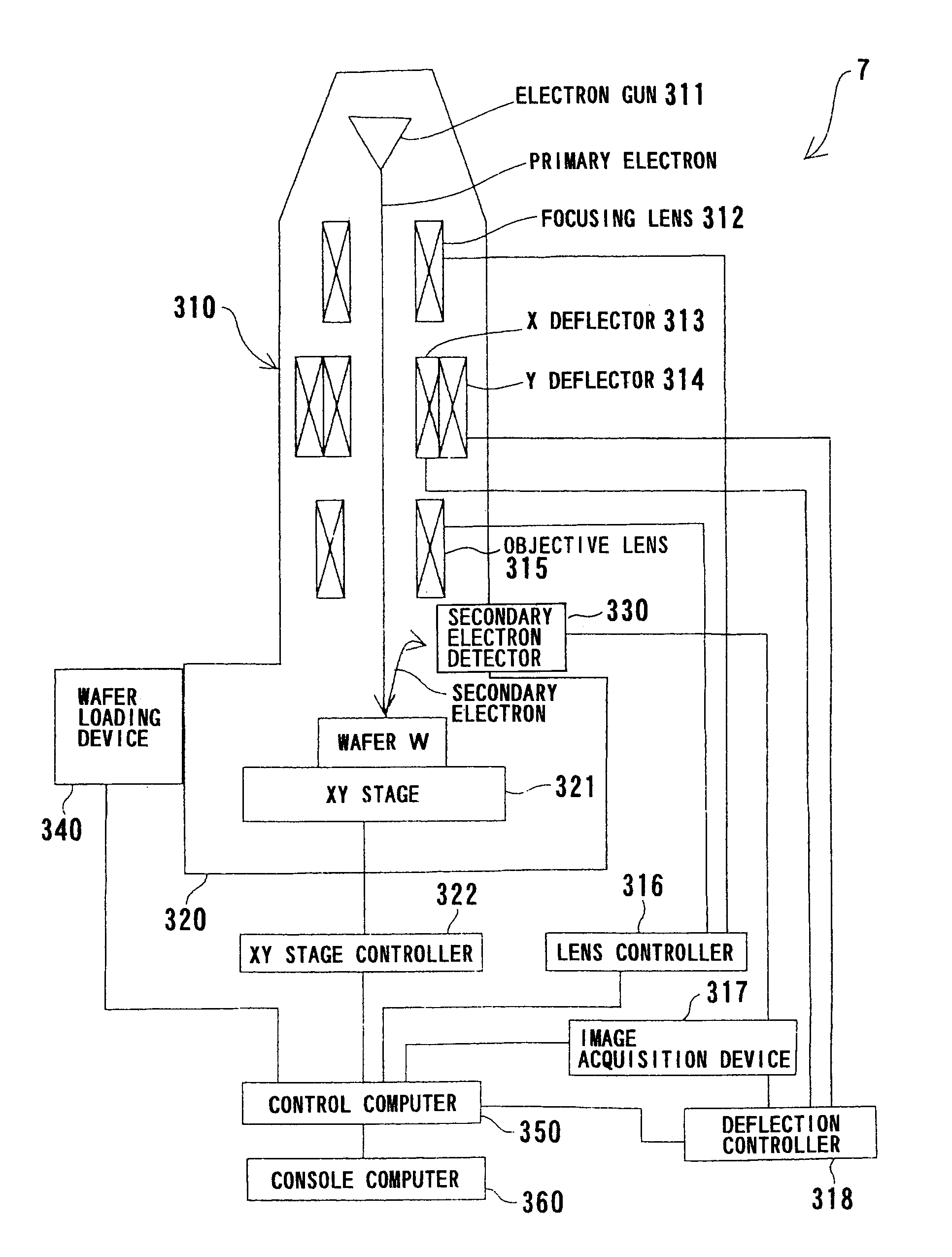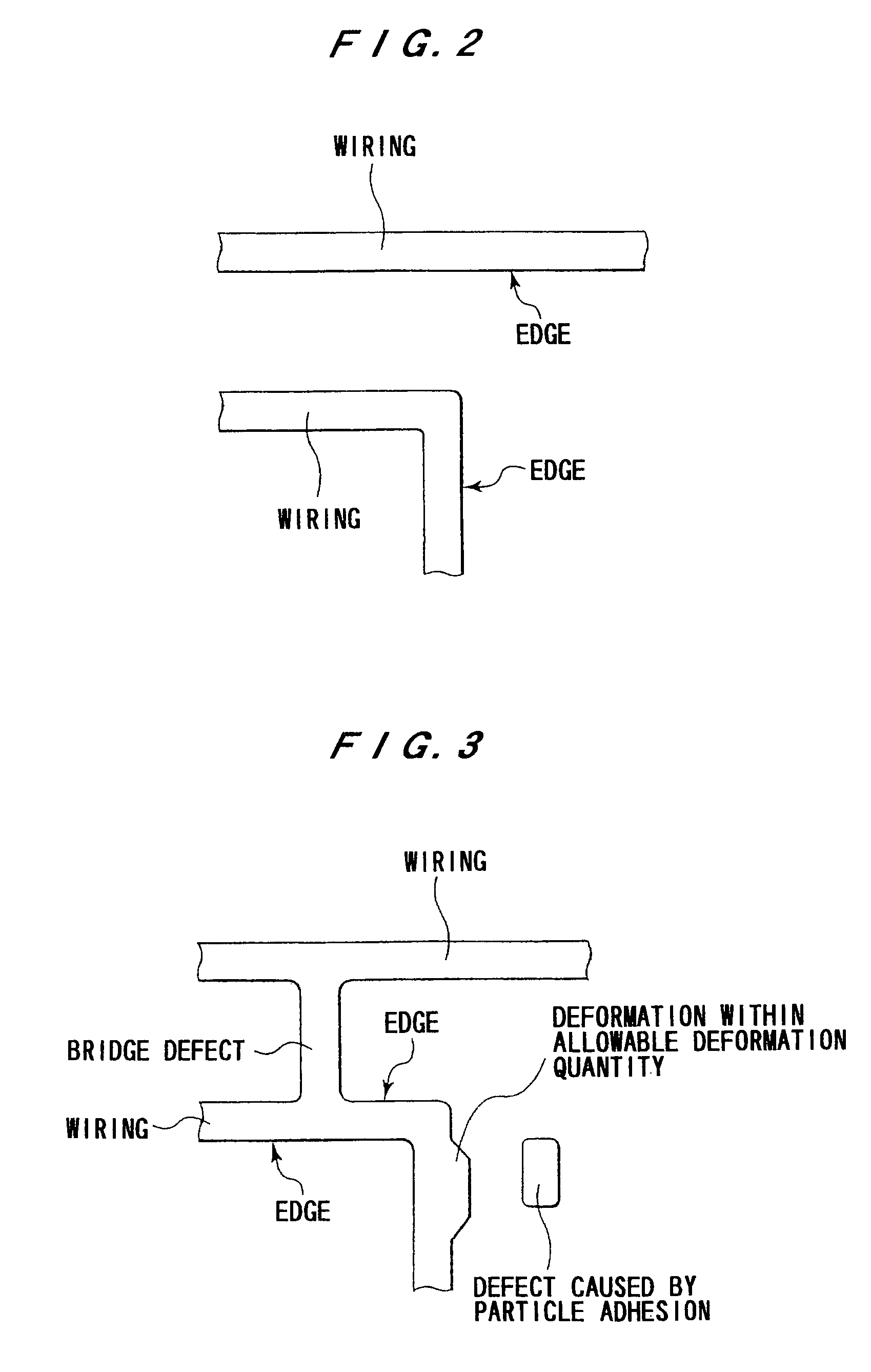Pattern inspection apparatus and method
a technology of pattern inspection and apparatus, which is applied in the direction of image enhancement, semiconductor/solid-state device testing/measurement, instruments, etc., can solve the problems of fine defects existing in a place except a corner that cannot be detected, and the corner roundness of a pattern formed on a wafer is likely to be detected as a defect, and the pretreatment may not be perfect to prevent the corner roundness of the pattern from being detected
- Summary
- Abstract
- Description
- Claims
- Application Information
AI Technical Summary
Benefits of technology
Problems solved by technology
Method used
Image
Examples
Embodiment Construction
[0179]Contents
1. Overview
2. Hardware configuration
2.1 Basic arrangement of image generation device
2.2 Scan methods of image generation device
2.3 Basic arrangement of pattern inspection apparatus
3. Explanations of terms
3.1 Edge
3.2 Reference pattern
3.3 Recipe data
3.4 Inspection-unit-area
3.5 Inspection results
4. Basic Inspection processing
4.1 The first edge detection
4.1.1 The first edge detection method 1
4.1.2 The first edge detection method 2
4.2 Line-shaped pattern matching method
4.2.1 Matching method in which unique pattern is used
4.2.2 Matching method in which negative pattern is used
4.2.3 Matching method in which projection data obtained by projecting edge on the horizontal and vertical axes are used
4.3 Matching method in which geometrical information for isolated pattern is used
4.4 Matching method in which statistics for isolated pattern are used
4.5 Post-matching processing
4.6 The first inspection
4.6.1 Method of recognizing defect having abnormal patter...
PUM
| Property | Measurement | Unit |
|---|---|---|
| angle | aaaaa | aaaaa |
| angle | aaaaa | aaaaa |
| angle | aaaaa | aaaaa |
Abstract
Description
Claims
Application Information
 Login to View More
Login to View More - R&D
- Intellectual Property
- Life Sciences
- Materials
- Tech Scout
- Unparalleled Data Quality
- Higher Quality Content
- 60% Fewer Hallucinations
Browse by: Latest US Patents, China's latest patents, Technical Efficacy Thesaurus, Application Domain, Technology Topic, Popular Technical Reports.
© 2025 PatSnap. All rights reserved.Legal|Privacy policy|Modern Slavery Act Transparency Statement|Sitemap|About US| Contact US: help@patsnap.com



